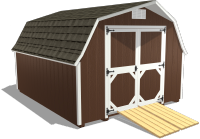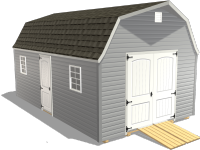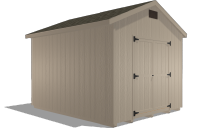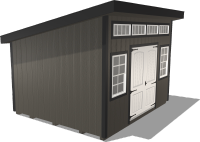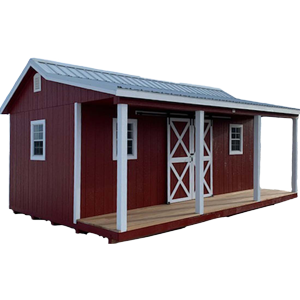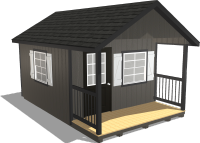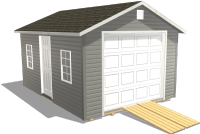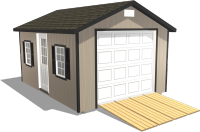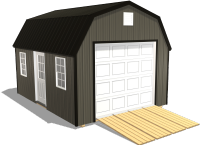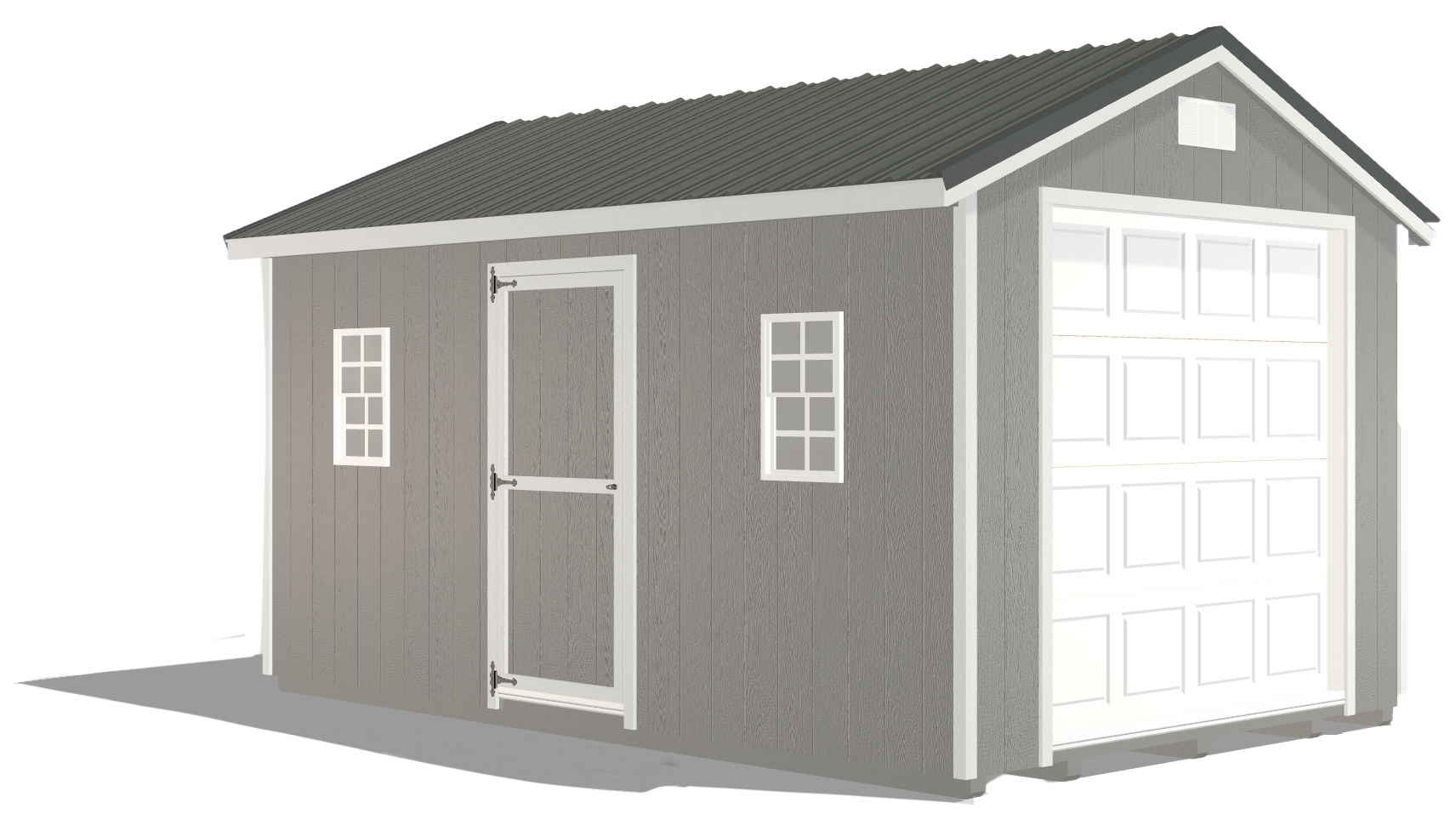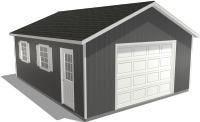Greenhouse Grow Lights vs. Sunlight: Which One Wins?
by Dakota Storage Buildings, on October 17, 2025

Whether you’re starting seedlings, growing herbs, or producing fresh vegetables year-round, plants depend on consistent light to thrive. But if you plan to utilize a greenhouse next spring, you may be asking: Is natural sunlight enough for my greenhouse interiors, or are grow lights worth the investment?
There’s no one-size-fits-all answer. It depends on your climate, your plants, and your goals. Let’s break down how sunlight compares to greenhouse grow lights and when it makes sense to use one, the other, or both.
Why Consistent Light Is Non-Negotiable
Plants transform light into energy through photosynthesis, a process that fuels their growth, flowering, and fruit production. While leafy greens can often tolerate lower light levels, fruiting plants like tomatoes, peppers, and cucumbers need hours of consistent, bright light to thrive.
That’s where the challenge comes in. Sunlight availability changes with the seasons. In the summer, your greenhouse interiors may soak up long, intense days of sunshine. But in winter or during cloudy weather, daylight hours shorten, and plants may struggle to get the light they need.
Without consistent light, growth slows, harvests shrink, and plants become stressed. This is where many gardeners start considering supplemental greenhouse grow lights to close the gap.
Is Sunlight Enough? The Pros and Cons for Greenhouse Gardeners
When you think of plant growth, the sun is the most natural light source there is. Sunlight delivers a complete spectrum of wavelengths, it’s free to use, and it comes with zero energy costs or installation. For many gardeners, this makes it the obvious first choice. And in the right conditions, it may truly be all your greenhouse needs to flourish for most of the year.
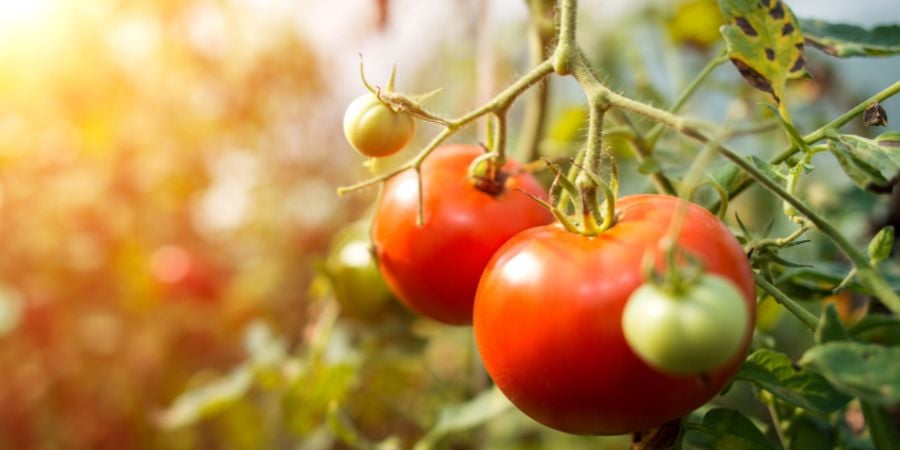
But depending solely on sunlight comes with trade-offs:
- Seasonality: Shorter days in fall and winter reduce growing potential.
- Shade: Nearby trees, buildings, or even the greenhouse structure itself can limit exposure.
- Inconsistency: Cloudy days and shifting weather can disrupt your plants’ light intake.
This doesn’t mean sunlight isn’t effective; it simply means your greenhouse conditions will dictate how reliable it is. Placement and design make a big difference. A south-facing greenhouse with minimal shade will maximize sun exposure, while one positioned near taller buildings or trees may leave plants reaching for light.
If you want year-round harvests or want to grow light-intensive crops, sunlight alone may not always deliver consistent results. That’s where greenhouse grow lights come into play.
What Makes Modern Grow Lights So Effective?
When sunlight isn’t consistent, greenhouse grow lights can fill the gap. These artificial lighting systems mimic the energy plants would naturally receive from the sun, ensuring they get the constant light they need to photosynthesize and stay healthy. Grow lights can be used as the main source of light or as supplemental lighting in greenhouse interiors to extend daylight hours or strengthen weak winter sun.

There are many types of grow lights available, but LED grow lights have become the most popular choice. Here’s why:
- Energy-Efficient: LEDs consume far less power than traditional options.
- Customizable Spectrum: They can be fine-tuned to emit light wavelengths plants need most.
- Long Lifespan: LEDs last years longer than fluorescent or high-pressure sodium (HPS) lights.
Fluorescent lights are another affordable option that’s useful for small-scale greenhouse setups. You could also choose HPS lights, which produce strong illumination but also generate a lot of heat and use more energy. Still, for most greenhouse gardeners, LEDs strike the best balance between efficiency, plant health, and long-term cost savings.
How To Decide What’s Best for Your Greenhouse
Deciding between relying on natural sunlight or investing in greenhouse grow lights isn’t always straightforward. Every greenhouse interiors setup is different, and what works for one gardener might not work for another. The key is to match your lighting strategy with your plants’ needs, your environment, and your overall gardening goals.
Here are some of the biggest factors to weigh when making your decision:
- Plant Types: Leafy greens, herbs, and microgreens often grow well with less light. Fruiting vegetables demand more consistent, intense light.
- Location & Climate: A greenhouse here in the North Midwest will have different needs than one in sunny Texas.
- Seasonal Needs: Winter growing nearly always requires supplemental lighting, especially for fruiting or flowering plants.
- Budget & Efficiency: LEDs have higher upfront costs but lower long-term energy use.
- Your Goals: If you garden as a hobby, you may rely mostly on natural sunlight, but if you want to grow a year-round food supply, you may need the reliability of grow lights.
Taking time to evaluate these factors will save you frustration later. Ultimately, the choice is about creating a system that supports your gardening style. Whether you lean fully on the sun, incorporate a few supplemental lights, or commit to a full LED greenhouse setup, the right strategy is the one that keeps your plants healthy.
Blending Sunlight With LEDs for Better Growth
It doesn’t always have to be an “either/or” decision. In fact, many gardeners find that the most reliable way to support plant health is by blending the strengths of natural sunlight with the control of LED grow lights. This hybrid approach means you can lean on free sunlight when it’s abundant, and step in with artificial lighting when the sun can’t keep up.

Supplemental lighting is especially useful when:
- Your greenhouse sits in a shaded area. Trees, nearby structures, or the orientation of your greenhouse can limit direct sunlight exposure, making extra lighting essential for steady growth.
- Winter daylight hours aren’t long or strong enough for your plants. Short, cloudy days often don’t provide the intensity or duration fruiting and flowering plants need, which can slow or even halt production.
When you add greenhouse grow lights to complement natural sun, you aren’t replacing it; you’re filling in the gaps to maintain consistency. Think of it as ensuring your plants never miss a “meal” of light.
Best practices for integrating LED grow lights:
- Timing: Simulate natural daylight by providing 12–16 hours of light, depending on the plant type. Leafy greens may need less, while fruiting vegetables typically require longer exposure.
- Placement: Position lights at the right distance from plants, close enough for adequate intensity, but far enough to prevent stress or leaf burn. Adjust placement as plants grow taller.
- Consistency: Automating your lights with timers helps maintain a predictable light cycle, which supports healthy growth patterns and reduces guesswork for you.
Combining both sources of light also makes your greenhouse interiors more resilient. If a string of cloudy days rolls in or your plants enter a high-demand stage like fruiting, your greenhouse grow lights ensure there’s no interruption in their energy supply.
Finding the Right Light for Your Greenhouse
Choosing between natural sunlight and greenhouse grow lights should be based on finding the right balance for your plants and goals. Evaluate your greenhouse’s location, your plant types, and your growing ambitions. With the right greenhouse setup, you can extend your growing season, improve plant health, and enjoy bigger harvests year-round.
Ready to learn more about greenhouse success? Download the Beginner’s Guide to Greenhouse Gardening and explore our full line of greenhouse options designed to support your gardening goals.





